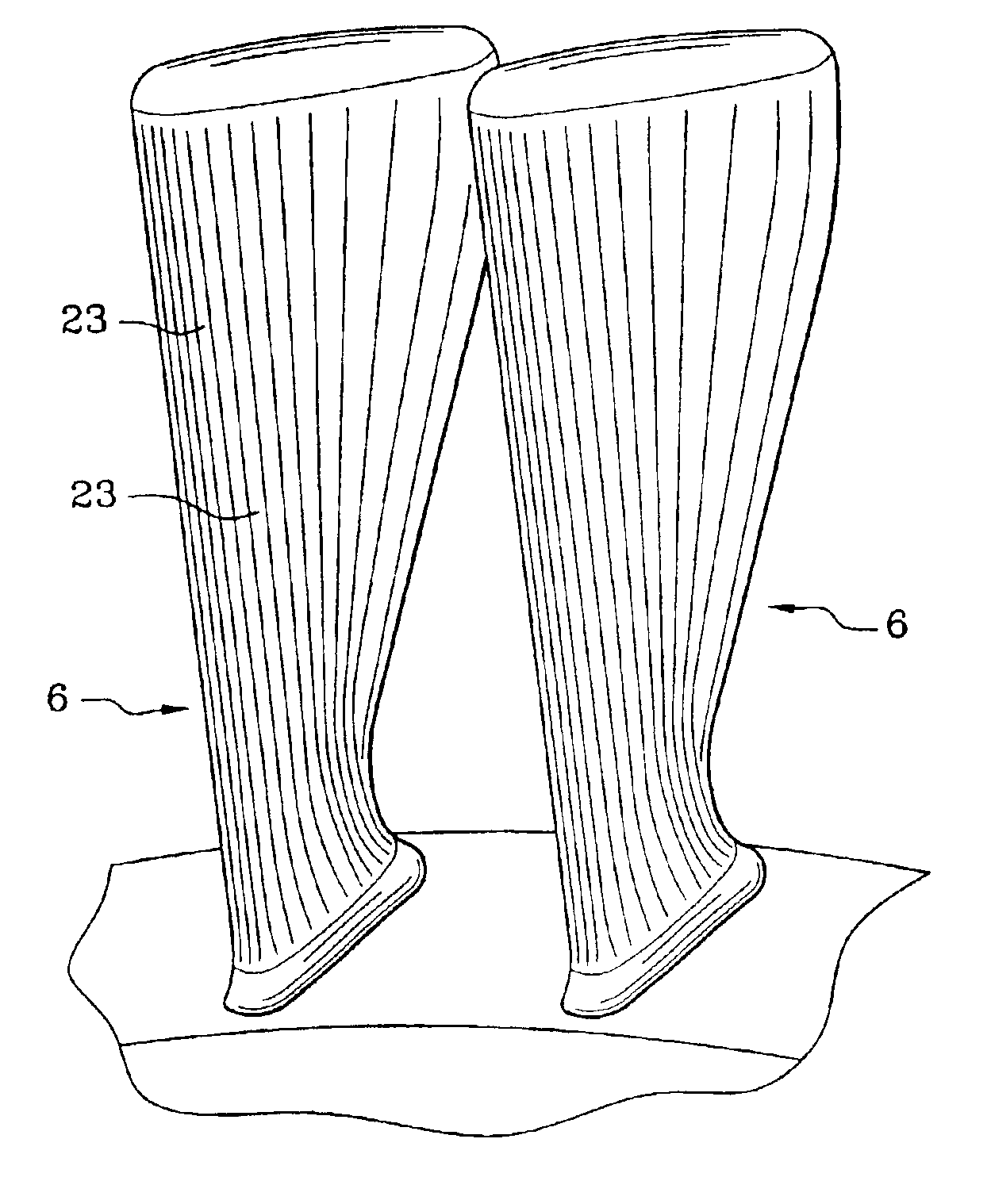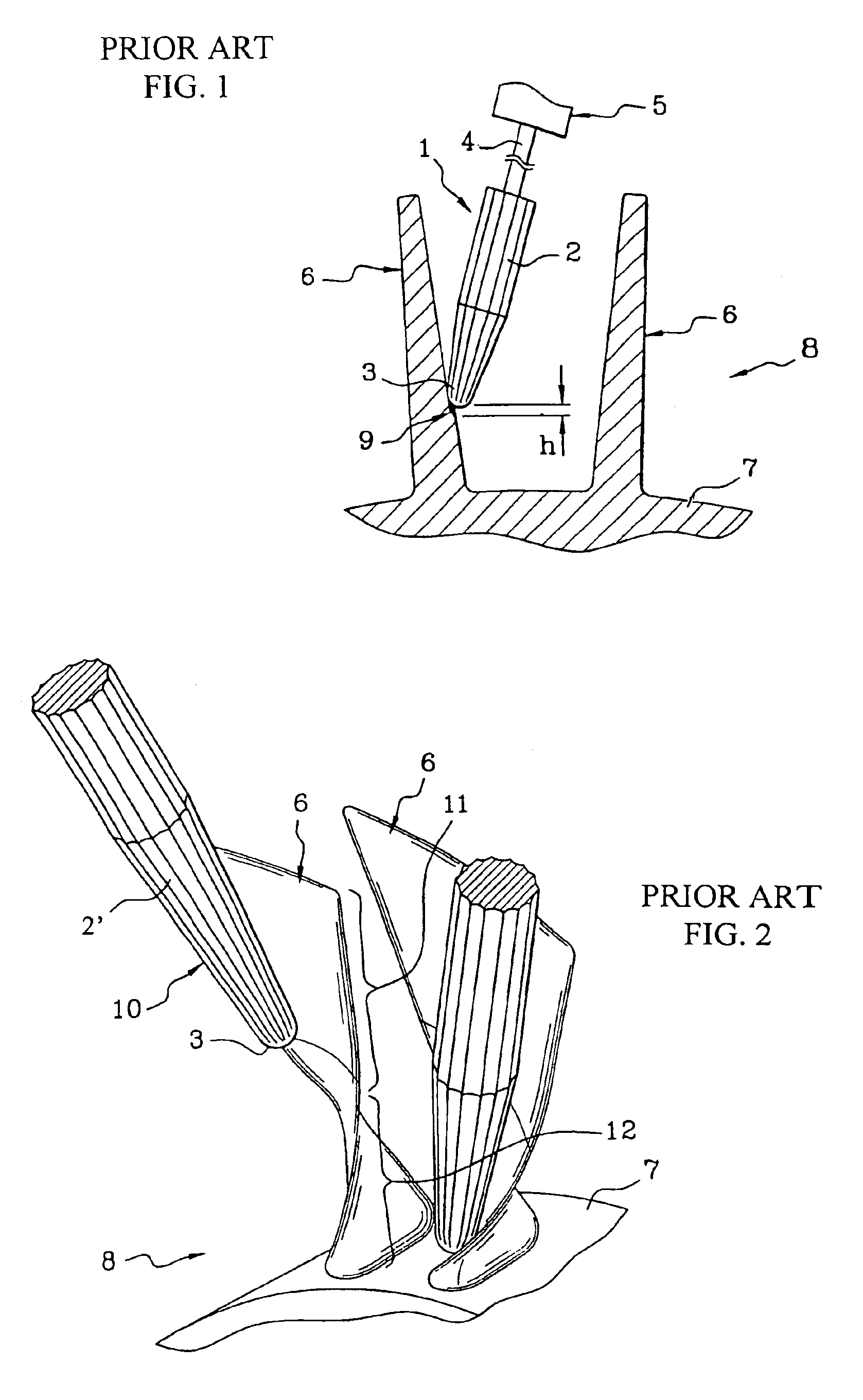Method of manufacturing an integral rotor blade disk and corresponding disk
- Summary
- Abstract
- Description
- Claims
- Application Information
AI Technical Summary
Benefits of technology
Problems solved by technology
Method used
Image
Examples
Embodiment Construction
[0025]Milling cutters traditionally used for machining blades, such as the one generally indicated at 1 in FIG. 1, comprise a conical main part 2 ending in a rounded and more specifically hemispherical, tip 3. The main part 2 and the tip 3 are each covered with cutting teeth, and the milling cutter 1 rotates about a rotation spindle 4 driven by a numerically controlled machine 5 which is not depicted in detail. The tip 3 is applied to a blade 6 which, with other similar blades and a hub 7, makes up a blisk in the process of being machined. The spindle 4 and the milling cutter 1 have a substantially radial orientation with a small tangential inclination (with respect to the disk 8). The milling cutter 1 is moved at right angles to the page, making successive passes at respective heights along the blade 6, these passes being separated by heights such as h, the reference 9 denoting the section of the blade 6 which will be removed in the next pass.
[0026]The milling cutter in FIG. 2 is i...
PUM
| Property | Measurement | Unit |
|---|---|---|
| Angle | aaaaa | aaaaa |
| Angle | aaaaa | aaaaa |
| Width | aaaaa | aaaaa |
Abstract
Description
Claims
Application Information
 Login to View More
Login to View More - R&D
- Intellectual Property
- Life Sciences
- Materials
- Tech Scout
- Unparalleled Data Quality
- Higher Quality Content
- 60% Fewer Hallucinations
Browse by: Latest US Patents, China's latest patents, Technical Efficacy Thesaurus, Application Domain, Technology Topic, Popular Technical Reports.
© 2025 PatSnap. All rights reserved.Legal|Privacy policy|Modern Slavery Act Transparency Statement|Sitemap|About US| Contact US: help@patsnap.com



